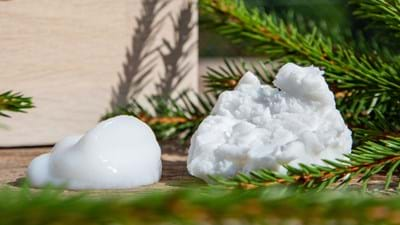One of the advantages of cellulosic materials (including nanocellulose and microfibrillated cellulose (MFC)) compared to synthetic materials, is their environmentally friendly profile as well as their biodegradability. This profile is impacted by the number of chemical reactions the product will undergo during the manufacturing process. It would therefore be favorable to obtain desired chemical properties via physical adsorption instead of chemical reactions.

Surfactants – a tool to tailor surface chemistry of MFC?
In this article, you will find examples on possible effects of surface adsorbed surfactants on cellulosic materials.
MFC and surfactants
MFC is a robust material with a high surface area and a lot of available hydroxyl groups on the cellulose surface when it is in its native form. This allows for its dispersion and use in water as well as polar solvent based formulations, but at the same time this makes it more challenging to disperse in non-polar media.
MFC is also compatible with many different chemicals including surfactants. In an earlier blog post, I discussed the compatibility of MFC with surfactants and demonstrated that changing the type of surfactant does not negatively affect the rheological behavior of MFC in water.
It remains however interesting to find out if the surfactant would adsorb on the fibril surface and how this will affect the properties and performance of the surfactant modified MFC.
Since surfactants are surface active agents, their adsorption on the surface of MFC could for example lower the surface tension between the MFC and non-polar liquids, resulting in modified surface wetting, improved dispersion or even detergency effect. This will depend on the choice of surfactant and the degree of adsorption of the surfactant on the MFC.
Is it possible to disperse MFC in non-polar organic media?
Surfactants are usually amphiphilic organic compounds with both a hydrophobic and a hydrophilic group.
As A. Dufresne explained in his book, (Nanocellulose: From Nature to High- Performance Tailored Materials, de Gruyter, Berlin, Germany, 2012.), due to the hydrophilic nature of MFC, the hydrophilic end of the surfactant might adsorb to the MFC while its hydrophobic end may extend out, providing a non-polar surface and lowering the surface tension of the MFC.
The non-polar MFC-surfactant mixture might therefore be easily dispersed in non-polar organic media.
This concept has not been demonstrated for MFC in specific but both Kim et al. (2009) and Rojas et al. (2009) used non-ionic sorbitan monostearate surfactant to disperse cellulose nanocrystals (NCC) in polystyrene based composite fibers, a non-polar media.
Even though MFC and NCC have differences, both are cellulosic materials and both products are very promising in a wide range of applications, including among others, coatings, adhesive, paper and packaging. Being able to disperse these materials in a non-polar media by simply mixing them with the right surfactant as described above is an excellent way to extrapolate their properties, already well known in aqueous or polar media, into non-polar media. These properties include strength, stability and rheology.
It might therefore be possible to use surfactant-modified MFC to first disperse the MFC in a non-polar solvent based formulation and then thicken it.
Reduced water wettability of anionic MFC films
In their publication of 2011, Xhanari et al. described the reduction of water wettability of MFC films by adsorption of cationic surfactants. In their experiments, they used MFC with high anionic surface charge obtained by TEMPO-mediated oxidation. This made it possible to adsorb cetylmethylammonium bromide CTAB, a cationic surfactant, on the fibers. The films made of the modified fibers had increased water repellency and increased roughness.
By simply adsorbing CTAB on the surface, it was possible to tailor the properties of the MFC film.
Proposed reading
In addition to the examples above, Tardy et al. provides more insight into the application of surfactants as a tool to tailor compatibility and surface chemistry of cellulose nanocrystals and microfibrillated cellulose/cellulose nanofibrils.
Even though most examples are on NCC and anionic MFC, it is reasonable to believe that the properties of MFC can also be modified by surfactants due to the similarities between native MFC and these materials.
Due to the very high surface area of MFC, properties and performance of the resulting MFC-Surfactant mixture might be greatly impacted.
It is therefore important to know which property is desired, which surfactant is possible to use to obtain that property as well as if the surfactant in question will adsorb on your MFC.


